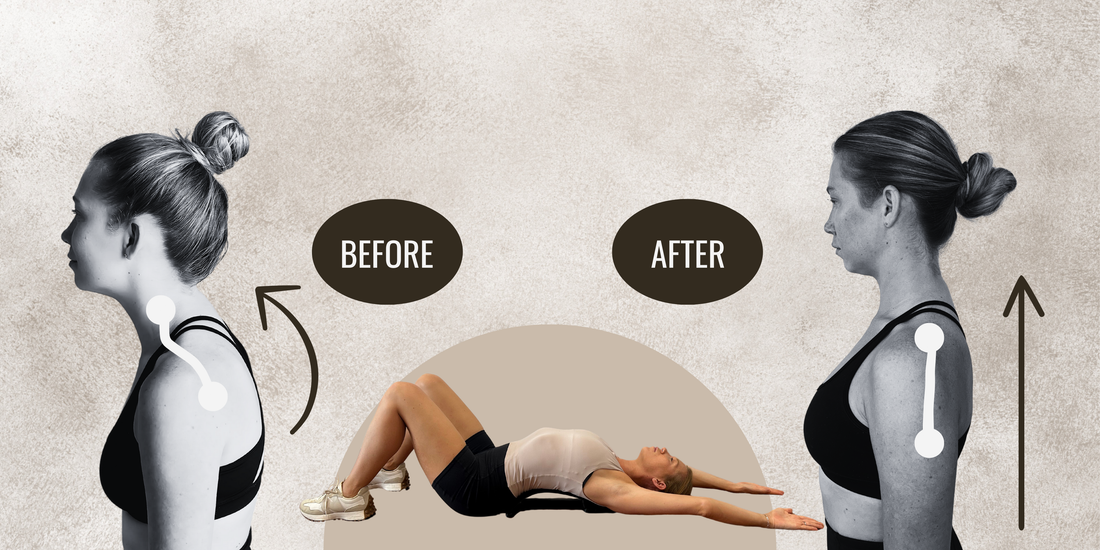
How to Fix a Neck Hump: A Physiotherapist's Guide to Treating Dowager's Hump
Share
Ah, the “neck hump”—that pesky bulge at the back of your neck. Whether you know it as a Dowager’s Hump, a buffalo hump, or by its clinical name, the Dorsocervical Fat Pad, it’s one of the more stubborn results of our screen-centered lifestyles. But here’s the good news: with the right know-how, you can reduce its appearance and improve your spinal health.
Why the Neck Hump Forms
Let’s start with a bit of anatomy. Our necks weren’t exactly designed for hours of phone scrolling, laptop crouching, or the countless other ways we put our spines under pressure every day. Many of our daily activities—cooking, typing, cleaning, driving—encourage forward flexion (rounding of the spine), which keeps the upper back (the thoracic spine) in a position that strains the muscles, ligaments, and joints in ways they’re not designed for.
In an ideal posture, a bit of thoracic rounding is actually normal (about 20-45 degrees). But with forward-flexed postures becoming the norm, some people’s thoracic spine starts bending beyond that range, developing what we call “thoracic kyphosis.” And when the mid-back rounds, the neck has to bend the opposite way to keep the head level, which often results in the neck poking forward. Now, add about 5kg of head weight, and we’re looking at serious stress on the lower neck joints, specifically around the sixth cervical vertebra (C6). Over time, your body can respond by adding a little “padding” here to protect the spine—a bulge that becomes the neck hump.
Can You Reduce the Neck Hump? Absolutely!
The trick isn’t to banish all rounding; instead, we need to help the spine move in the opposite direction to counteract all that forward flexion. This movement, called “extension,” is the natural antidote to the hunch. Building flexibility and strength in spinal extension can:
- Reduce the pressure between the neck and upper back
- Alleviate the stress causing that bulge
- Gradually improve your posture, making the neck hump less prominent
Quick Tips for Reducing the Neck Hump
Here’s how you can start to work against that daily forward flexion:
1. Spinal Mobility Exercises – Loosen up your thoracic spine by incorporating gentle extension movements throughout the day. This helps relieve the strain that builds from sitting and forward-heavy tasks.2. Posture Correction Techniques – Focus on keeping your head balanced over your shoulders, and avoid “chin poke” (where your head juts forward). Practicing awareness is a huge part of better neck alignment.
3. Strengthening Routines – Strengthen the muscles supporting your mid-back, neck, and shoulder blades to encourage a neutral spine position.
Want a Step-by-Step Solution?
If you’re serious about tackling your neck hump and need a clear guide, our Not Just a Gimmick Bridge has you covered. With a physio-approved neck and back stretcher, plus a tailored program, you can start your journey to a stronger spine and better posture—no gimmicks, just real results.
Take a look at our expert-approved product - The Bridge and take the first step toward a healthier spine!
